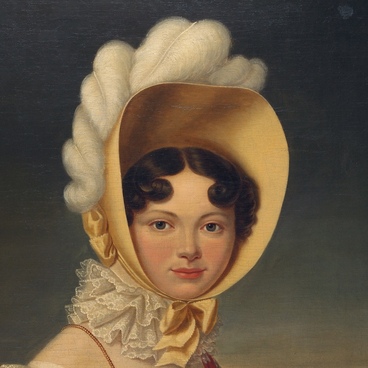Early 19th century is the golden age of Empire style in the Russian art. Attracted by showiness and formality, Empire was a style of emperors.
The ceremonial set of furniture consisting of 70 objects was created in early 19th century for the Tver palace. The furniture was designed after the drafts of architect Karl Ivanovich Rossi in the workshop of a famous in Saint Petersburg furniture maker Franz Grosse. Rossi was engaged in reconstruction of the palace for Catherine Pavlovna, who arrived there in 1809 with her husband Duke George of Oldenburg. In the past not only working with the building itself, but also the complete work with the interior was part of an architect’s duty. The palace’s interior decoration was fully changed for Catherine Pavlovna. The objects from so called ‘Rossi’s set of furniture’, according to the plan, were distributed between two main rooms: “The Blue Salon” and “The Big White Hall”.
The furniture’s design was based on the combination of a white colour flat elements with rich gold plating, covering the prominent carved elements. As long as the antiquity was a stylistic origin for the Empire style, images of mythological and real animals and birds were used for decoration. The armrests and back-rests were ornamented with the elegant foliage pattern. Precious blue and crimson velvet were used for upholstery.
The torchier reaches almost 3 metres in height. It is made of wood and decorated with the carving in the form of griffons and other mythological creatures. The burners are decorated with the winged females. At first glimpse one may have an impression that it is made of marble and bronze. In the Empire period there was also a florescence of ‘decoys’ and theatricalism in interior, which is why such tricks weren’t a rare thing.
The most part of the set survived to this day. In the Soviet time it was divided between three museums: The Tver Art Gallery, The United Tver Museum, and The State Memorial Estate “Pavlovsk”. Nowadays the Art Gallery collection has 27 objects from the set, namely the chairs, torchiers, tables, and padded stools. It is important to note that part of the set was renovated in 2015.
The ceremonial set of furniture consisting of 70 objects was created in early 19th century for the Tver palace. The furniture was designed after the drafts of architect Karl Ivanovich Rossi in the workshop of a famous in Saint Petersburg furniture maker Franz Grosse. Rossi was engaged in reconstruction of the palace for Catherine Pavlovna, who arrived there in 1809 with her husband Duke George of Oldenburg. In the past not only working with the building itself, but also the complete work with the interior was part of an architect’s duty. The palace’s interior decoration was fully changed for Catherine Pavlovna. The objects from so called ‘Rossi’s set of furniture’, according to the plan, were distributed between two main rooms: “The Blue Salon” and “The Big White Hall”.
The furniture’s design was based on the combination of a white colour flat elements with rich gold plating, covering the prominent carved elements. As long as the antiquity was a stylistic origin for the Empire style, images of mythological and real animals and birds were used for decoration. The armrests and back-rests were ornamented with the elegant foliage pattern. Precious blue and crimson velvet were used for upholstery.
The torchier reaches almost 3 metres in height. It is made of wood and decorated with the carving in the form of griffons and other mythological creatures. The burners are decorated with the winged females. At first glimpse one may have an impression that it is made of marble and bronze. In the Empire period there was also a florescence of ‘decoys’ and theatricalism in interior, which is why such tricks weren’t a rare thing.
The most part of the set survived to this day. In the Soviet time it was divided between three museums: The Tver Art Gallery, The United Tver Museum, and The State Memorial Estate “Pavlovsk”. Nowadays the Art Gallery collection has 27 objects from the set, namely the chairs, torchiers, tables, and padded stools. It is important to note that part of the set was renovated in 2015.



